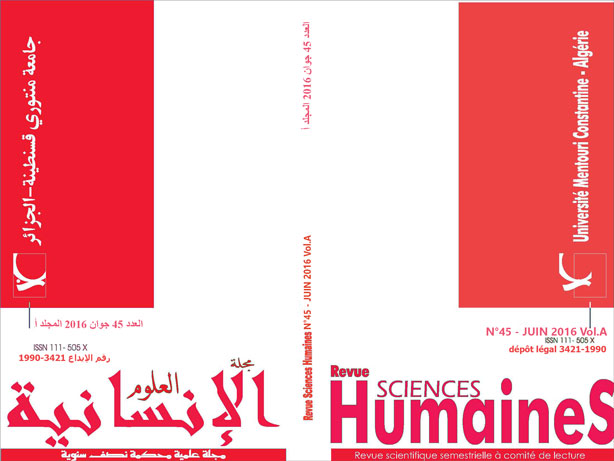Blended Learning in Academic Writing: Realities and Perspectives
الكلمات المفتاحية:
blended learning، motivation، academic writingالملخص
The present article is of two-fold aim. First, it undertakes a situation analysis through investigating students’ level of motivation and academic writing proficiency along with exploring teachers’ perceptions and experience with blended learning. The study, hence, hypothesizes that teachers do not fully conceive and adequately use blended learning to improve students’ academic writing performance and motivation. Second, it introduces the philosophy and methodology of blended learning in academic writing for undergraduate students, and hypothesizes that blended learning in academic writing would improve students’ motivation and academic writing performance. To test the hypotheses, questionnaires and composition tests were conducted, along with suggesting some guidelines for designing blended learning courses for language practitioners.التنزيلات
المراجع
- Ames C. 1992. Classrooms: goals, structures, and student motivation. J. Educ. Psychol. 84:261–71
- Bath, D & Bourke, J. (2010). Getting Started with Blended Learning. GIHE Griffith Institute for Higher Education. Griffith University, Australia.
- Bonk, C. J., & Graham, C. R. (2006). Handbook of blended learning: Global perspectives, local designs. San Francisco: Jossey-Bass.
- Bowker, N. (2007). Academic Writing: A Guide to Tertiary Level Writing, Students Learning Development Services: Massey University, Student life Palmerston North.
- Breuch, L. M. Kastman (2002). Post-Process '' pedagogy'': A Philosophical Exercise. JAC:A Journal of Composition Theory, 22 ,119-50.
- Brophy, J. (2005). Goal theorists should move on from performance goals. Educational Psychologist, 40(3), 167–176.
- Bruce, I. (2006).Theorizing Tertiary Writing Instruction: Accounting for the Process, Post-Process, Genre and Critical Literacies Approaches. University of Waikato, Hamilton, New Zealand.
- Caraivan, L. (2011). Blended learning: From concept to implementation. Euromentor JournalStudies about Education, 2(4), 119-126.
- Churches, A. (2008). Bloom’s digital taxonomy. Available at http://edorigami.wikispaces.com/file/view/bloom%27s+Digital+taxonomy+v3.01.pdf
- CLARK, R. T., & Mayer, R. E. (2003).E-Learning and the Science of Instruction. San Frascisco: Preiffer.
- Cooper, P.A. (1993). Paradigm Shifts in Designed Instruction: From Behaviorism to Cognitivismto Constructivism. Educational Technology 33: 12-19.
- Flower, L, and Hayes, Hayes, J. R. (1981). A Cognitive Process Theory of Writing. College Composition and Communication, 39, 449-461.
- Formal Academic Writing. (2012). Blinn College-Bryan Writing Center.
- Garrison, D. R. (2007). Online community of inquiry review: Social, cognitive, and teaching presence issues. Journal of Asynchronous Learning Networks, 11(1), 61-72.
- Garrison, D.R. &Kanuka, H. (2004). Blended Learning: Uncovering Its Transformative Potential in Higher Education. Internet and Higher Education, 7(2), 95-105.
- Graham, C.R. (2006). Introduction to blended learning: Trends and future directions. In C.J. Bonk & C.R. Graham (eds.), Handbook of blended learning: Global perspectives, local designs (pp.3- 21). San Francisco, CA: Pfeiffer Publishing.
- Harran, M. (1993). A Survey of the Writing Approaches Followed by ESL Teachers in Port Elizabeth Secondary Schools Where Afrikaans is the First Language. Master Dissertation: Rhodes University.
- Hartley, J. (2008). Academic Writing and Publishing: A Practical Handbook. London: Routledge.
- Hyland, K. (1998). Hedging in Scientific Research Articles. Amsterdam: John Benjamins.
- Hyland, K. (2002). Teaching and Researching Writing. London: Longman
- Hyland, K. (2003). Second Language Writing. Cambridge: Cambridge University Press.
- Lai, W. L. (2013). Introducing a Logical Thinking Approach to Teaching Academic Writing: Why is Logical Thinking Education Needed in Academic Writing . NU Ideas, 2, (2), 1-9.
- Lin, H (2007). Blending online components into traditional instruction: A Case of using technologies to support good practices in pre-service teacher education. Journal of Instructional Delivery Systems,21(1), 7-16.
- Matsuda, P. K. (2003). Process and Post-Process: A Discursive History. Journal of Second LanguageWriting, 12(1), 65-83.
- Mu, Congjun. (2005). A Taxonomy of ESL Writing Strategies. In Proceedings Redesigning Pedagogy: Research, Policy, Practice, 1-10.
- Sethy,S.S,(2008). Distance Education in The Age of Globalization: An Overwhelming Desire towards Blended Learning. Turkish Online Journal of Distance Education-TOJDE Vol.9 No: 3.
- Sharma, P. & Barrett, B. (2007). Blended learning: Using technology in and beyond the language classroom. London: Macmillan.
- Silva, T. (1990). Second Language Composition Instruction: Developments, Issues and Directions. In B. Kroll (Ed.):Second language writing: Research Insight for Classroom, 11-23. Cambridge: Cambridge University Press.
- Singh, H., & Reed, C. (2001). A white paper: Achieving success with blended learning, centra software.
- Smart, K. L. & Cappel, J. J. (2006). Students' perceptions of online learning: A comparative study. Journal of Information Technology Education. 5,201-219.
- Twigg, C. (2003).Improving Learning and Reducing Costs: New Models for Online Learning. Educause Review, 38 (5), pp. 28-38. Retrieved from: https://net.educause.edu/ir/library/pdf/ERM0352.pdf
- Irvin, L. L (2010). What is “Academic” Writing? In Lowe, C and Zemliansky, P.Writing Spaces: Readings on Writing. Parlor Press,1, 3-17.
- Vaughan, N. (2007). Perspectives on blended learning in higher education. International Journal on ELearning, 6(1), 81-94.
- Weiner, B. (1985). An attributional theory of achievement motivation and emotion. Psychological Review, 97, 548-573.
- Weiner, B. (1990). History of motivational research in education. Journal of Educational Psychology, 82, 616—622.












